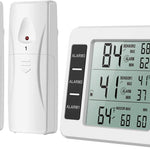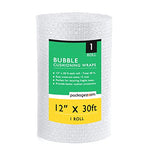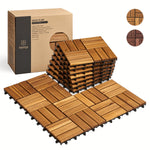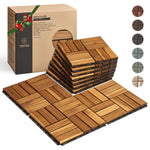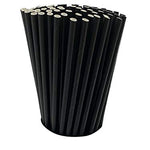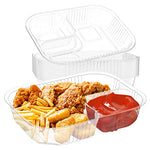You have no items in your shopping cart.
The world of microbiology can be fascinating and overwhelming at the same time. With various terminologies to remember and comprehend, it can be challenging to keep track of everything. One such term is "vehicle of contamination." This term may not be familiar to many people, but it is crucial in the field of microbiology.
In simple terms, a vehicle of contamination is any object or substance that can carry and transfer harmful microorganisms from one place to another. In this article, we will provide you with a comprehensive understanding of the term and its significance.
What is the Best Definition of Vehicle of Contamination?
As mentioned earlier, a vehicle of contamination is any object or substance that can carry and transfer harmful microorganisms. These microorganisms can cause diseases and infections, making it essential to understand how they spread. The term "vehicle of contamination" includes various things that can act as a carrier for these microorganisms, such as:
- Water
- Food
- Air
- Soil
- Surfaces and objects
- Animals and insects
In simple terms, anything that can come into contact with microorganisms and transfer them to another surface can be considered a vehicle of contamination. The most common example of this is food. Food can get contaminated with bacteria or viruses during the production, handling, or storage process. When people consume this contaminated food, they can become sick, leading to outbreaks of foodborne illnesses.
How Do Vehicles of Contamination Work?
Vehicles of contamination work by transferring harmful microorganisms from one surface to another. The transfer can occur through different means, such as:
-
Direct contact: This happens when the vehicle of contamination comes into contact with a surface or object, transferring the microorganisms directly.
-
Indirect contact: This happens when the vehicle of contamination comes into contact with another surface or object, which then transfers the microorganisms.
-
Airborne transmission: This occurs when the vehicle of contamination releases microorganisms into the air, and people inhale them.
Once the microorganisms transfer, they can grow and multiply, leading to infections and diseases.
What are the Different Types of Vehicles of Contamination?
As mentioned earlier, vehicles of contamination include various objects and substances. Here are some of the most common types:
Water
Water is one of the most significant vehicles of contamination. Contaminated water can carry harmful microorganisms that can cause diseases like cholera, typhoid, and hepatitis A.
Food
Food is another crucial vehicle of contamination. Contaminated food can cause foodborne illnesses like salmonella, E.coli, and norovirus. These illnesses can cause symptoms like vomiting, diarrhea, and fever.
Air
Airborne transmission can occur when people inhale microorganisms that are present in the air. This can happen due to various reasons, such as poor ventilation or air conditioning systems.
Soil
Soil can contain harmful microorganisms that can cause infections like tetanus or fungal infections.
Surfaces and Objects
Surfaces and objects like doorknobs, tables, and phones can harbor microorganisms and transfer them to people who touch them.
Animals and Insects
Animals and insects can also act as vehicles of contamination. For example, mosquitoes can carry and transmit diseases like malaria and dengue fever. Animals like cows, pigs, and chickens can also carry bacteria like E.coli and salmonella.
How Can You Prevent the Spread of Contamination?
Preventing the spread of contamination is essential to avoid illnesses and infections. Here are some tips to help you prevent the spread of contamination:
-
Wash your hands frequently: Regular hand washing is the most effective way to prevent the spread of harmful microorganisms.
-
Cook food properly: Make sure to cook your food to the appropriate temperature to kill any bacteria that may be present.
-
Avoid cross-contamination: Use separate utensils and cutting boards for raw and cooked foods to avoid cross-contamination.
-
Use clean water: Make sure to use clean water for drinking, cooking, and washing.
-
Keep surfaces clean: Regularly clean and disinfect surfaces and objects that people frequently touch.
-
Get vaccinated: Vaccines can help prevent the spread of diseases like measles, mumps, and rubella.
FAQs
- What are the most common vehicles of contamination?
The most common vehicles of contamination are food, water, and air.
- What are the dangers of contamination?
Contamination can lead to illnesses and infections, some of which can be severe and life-threatening.
- How can I protect myself from contamination?
You can protect yourself from contamination by washing your hands regularly, cooking food properly, using clean water, and avoiding contact with sick people.
- Can animals be vehicles of contamination?
Yes, animals can carry and transmit harmful microorganisms, making them potential vehicles of contamination.
- What are the most common foodborne illnesses?
The most common foodborne illnesses are salmonella, E.coli, and norovirus.
- Why is it essential to understand vehicles of contamination?
Understanding vehicles of contamination is crucial to prevent the spread of harmful microorganisms, which can cause illnesses and infections.
Conclusion
In conclusion, the best definition of vehicle of contamination is any object or substance that can carry and transfer harmful microorganisms. Contamination can occur through various means, including water, food, air, soil, surfaces and objects, and animals and insects. Preventing the spread of contamination is essential to avoid illnesses and infections. By following proper hygiene practices and understanding how contamination works, we can protect ourselves and those around us from harmful microorganisms.


